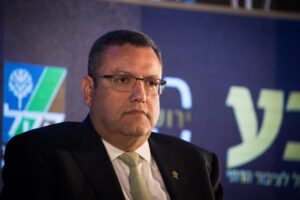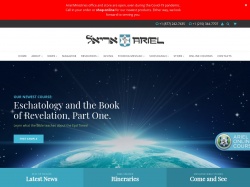
Mayor of Jerusalem preparing Zechariah’s vision of a Greater Jerusalem
According to the Prophet Zechariah, in the end of days, Jerusalem will be so large that it will expand beyond its Biblical borders demarcated by walls. As visitors to Israel’s eternal capital can attest, this is quickly becoming a reality and in a recent conference, the mayor described how this goal is coming closer by leaps and bounds.
Infrastructure
On Sunday, Jerusalem Mayor Moshe Lion was interviewed on the first day of the Jerusalem Conference hosted by B’Sheva newspaper and Arutz Sheva news. The mayor described a “tremendous construction boom” that is currently underway in Israel’s eternal capital.
The mayor began by describing projects that will greatly improve the transportation infrastructure of the city, many of which are expected to be completed in the near future.
Lion was asked about his expectations of the spiritual demographics.
“Religious Zionism is going to fill up Jerusalem,” Lion said, explaining that infrastructure was actually the way to build communities.
“We are in the midst of a tremendous construction boom of offices and jobs in an area spanning about 1,400,000 meters across the city and which are expected to be completed in about three years,” Lion said, adding, “For high-tech companies, we will reduce the tax by about 50% so that it will pay off for them to come to our city.”

Jerusalem Mayor Moshe Lion at the 17th annual Jerusalem Conference of the ‘Besheva’ group, on February 25, 2020. Photo by Yonatan Sindel/Flash90
The mayor claimed that in order for the city to flourish, the Arab residents must be included in the plan.
“More than 300,000 of the residents of Jerusalem live in eastern Jerusalem,” the mayor noted, referring to the importance he sees in investing for the benefit of Arab residents as well.
“In order for Jerusalem to be united forever and so that we can live alongside them, we will have to take care of them with the appropriate infrastructure and invest in the eastern part of the city,” he added.
A city without walls
The mayor’s plan fits in nicely with the prophesied “New Jerusalem” that will exist in the era of the Messiah. This was described by Zechariah as a city without walls:
The former said to him, “Run to that young man and tell him: “Yerushalayim shall be peopled as a city without walls, so many shall be the men and cattle it contains. Zechariah 2:8
This implies a city that is far larger than the walled city established by King David.This vision is actually a reality. Today, in a clear fulfillment of Zechariah’s unlikely prophecy, just 5 percent of Jerusalem’s 800,000 population live today within the walls, while the other 95 percent are spread over a vast municipal area. While Zechariah’s “wall of fire” is not visible to the naked eye, few believers could deny that the modern, unwalled Jerusalem, simply by virtue of its blessed continuance, is protected by the God of Israel.
The first step towards establishing this Greater Jerusalem was made by the Sanhedrin in 2017. The Sanhedrin completed a study of the borders of Jerusalem, culminating in an official ruling designating the borders of greater Jerusalem for the Third Temple era.
The Sanhedrin modeled their ruling after the same action performed by Ezra and Nehemiah, who mapped the boundaries of the city of Jerusalem when they returned to rebuild the Temple in the fifth century BCE.
The borders of greater Jerusalem established by the Sanhedrin reach from southern point designated by Karmei Tzur in Gush Etzion to the south, the city of Ofra in Samaria as the northern point, Jericho as the eastern point, and the city of Beit Shemesh in the West. The Sanhedrin has made several tours of the border, setting up signposts to designate the area.
The rabbi explained that as a holy city and the location of the Temple, the boundaries of Jerusalem have Biblical implications and are not a matter for secular and political authorities to determine.
“These are the borders sanctified for purposes of the Third Temple, within which Jews will be permitted to eat their Paschal sacrifice and any other Temple purposes which may only be performed within the Holy City,” Rabbi Weiss said. “This will all be centered around the Third Temple. The Temple has concentric circles of sanctity focusing on the even hashtiya, the Foundation Stone that was under the Ark of the Covenant in the Holy of Holies. The world was created from that spot. Jerusalem is an extension of this. The Third Temple will have an expanded sanctity encompassing the entire world enabling it to be a House of Prayer for all nations.”
“On a practical level, to host the feasts for all 70 nations, Jerusalem will need to be built up,” Rabbi Weiss said. “This is precisely what the mayor is doing right now.”
Israel in the News



